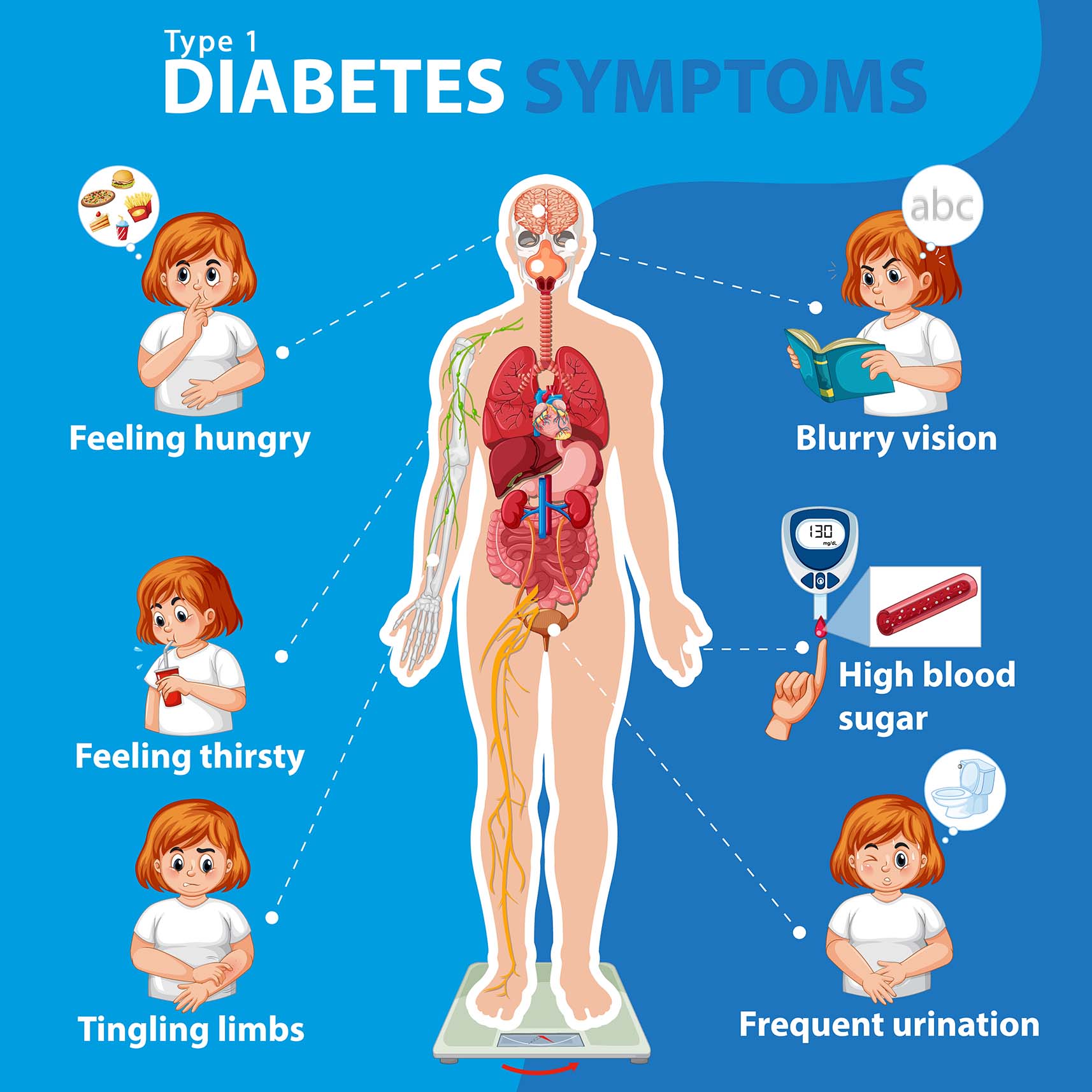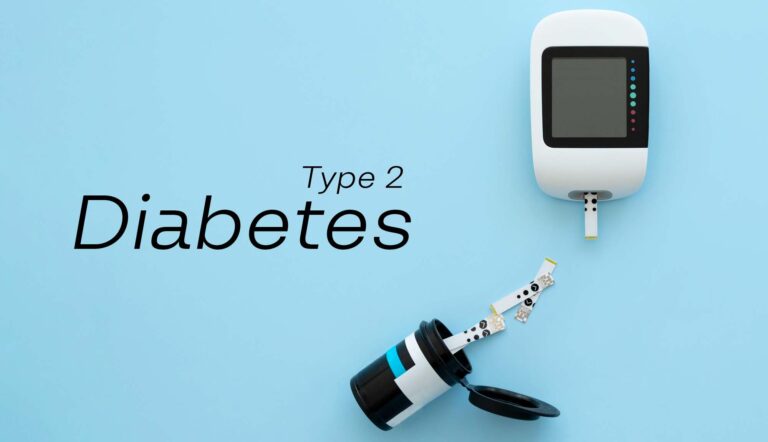Type 1 Diabetes is a chronic condition that affects millions of people worldwide. One of the most critical aspects of managing this disease is early detection. By recognizing the symptoms of Type 1 Diabetes in its early stages, you can ensure timely intervention and prevent potential complications.
In this section, we will explore the most common and less common symptoms of Type 1 Diabetes. We will also discuss how these symptoms may differ in children and adults.
Key Takeaways:
- Early detection of Type 1 Diabetes is vital for better management and improved health outcomes.
- Knowing the symptoms of Type 1 Diabetes can help you seek medical attention promptly.
- Type 1 Diabetes symptoms may manifest differently in children and adults.
What is Type 1 Diabetes?
Type 1 Diabetes is a chronic autoimmune condition that affects the body’s ability to produce insulin.
Insulin is a hormone that regulates blood sugar levels, ensuring that cells receive the energy they need to function properly. Without enough insulin, blood sugar levels can become dangerously high, leading to a range of health problems over time.
Unlike Type 2 Diabetes, which can be caused by lifestyle factors like poor diet and lack of exercise, Type 1 Diabetes is not preventable and cannot be cured. It is usually diagnosed in childhood or adolescence, but can also develop in adults.
The impact on the body
When the body’s immune system mistakenly attacks and destroys the cells in the pancreas that produce insulin, the result is Type 1 Diabetes. Essentially, the body is attacking itself.
This means that people with Type 1 Diabetes must rely on insulin injections or an insulin pump to regulate their blood sugar levels. They must also closely monitor their diet and exercise habits to manage their condition effectively.
“I was diagnosed with Type 1 Diabetes when I was 10 years old. It was scary at first, but I’ve learned to live with it and manage it every day. It’s definitely a challenge, but it’s made me stronger and more aware of my body.” – John Smith, Type 1 Diabetes Patient
Common Type 1 Diabetes Symptoms

Type 1 Diabetes symptoms can develop quickly or over a longer period, and the severity can vary from person to person. Some common symptoms of Type 1 Diabetes include:
| Symptom | Description |
|---|---|
| Excessive thirst | Feeling very thirsty even if you have had something to drink. |
| Frequent urination | Going to the bathroom more often than usual, including having to get up at night. |
| Extreme hunger | Feeling hungry all the time even if you have recently eaten. |
| Unexplained weight loss | Losing weight without trying or knowing why. |
| Blurry vision | Experiencing blurry vision or difficulty focusing. |
| Fatigue | Feeling very tired and lacking energy, even after resting. |
If you experience any of these symptoms, especially if they occur together, it is essential to seek medical attention promptly. By detecting Type 1 Diabetes early, you can reduce the risk of complications and manage the condition effectively.
Less Common Type 1 Diabetes Symptoms
While many people are aware of the common symptoms of Type 1 Diabetes such as increased thirst, frequent urination, and unexplained weight loss, there are other, less common symptoms that can also signal the onset of the condition. These may include:
- Blurry vision: High blood sugar levels can cause fluid to be pulled from the lenses of the eyes, leading to difficulty focusing and blurred vision.
- Dry or itchy skin: When blood sugar is high, it can cause the skin to become dry and itchy, making individuals with Type 1 Diabetes more susceptible to skin infections.
- Yeast infections: High blood sugar creates an ideal environment for yeast to grow, leading to infections in areas such as the mouth, skin folds, or genital regions.
- Fatigue: Consistently high blood sugar levels can cause fatigue and weakness, leading to a lack of energy and reduced physical activity.
If you notice any of these less common symptoms, it is important to speak with your healthcare provider as soon as possible. Early detection and treatment can help prevent complications and improve outcomes for individuals with Type 1 Diabetes.
Recognizing Type 1 Diabetes Symptoms in Children and Adults
Type 1 Diabetes affects both children and adults but can present unique symptoms based on age. It’s important to recognize the symptoms early to seek medical attention promptly.
Symptoms in Children
Children can have the same symptoms as adults, but some unique signs include:
| Symptom | Description |
|---|---|
| Bedwetting | Children who previously had control over their bladder may start wetting the bed during the night. |
| Mood Changes | Sudden mood swings and irritability can be a sign of high blood sugar levels. |
| Slow Healing | Cuts and bruises may take longer to heal than usual. |
Symptoms in Adults
The following symptoms can occur in adults:
- Blurred vision
- Increased thirst
- Frequent urination
- Extreme hunger
- Unintentional weight loss
- Fatigue
If you experience any of these symptoms, make an appointment with your doctor immediately. Early detection and management can lead to better health outcomes.
Conclusion
In conclusion, recognizing the symptoms of Type 1 Diabetes is crucial for early detection and intervention. By understanding the basics of Type 1 Diabetes and being aware of the most frequent and less common symptoms, you can seek medical attention promptly and take proactive steps towards managing your health effectively.
It is especially important to recognize the unique symptoms that may arise in children and adults, as Type 1 Diabetes can affect both age groups differently.
Remember to always stay informed, listen to your body’s signals, and seek medical attention if you suspect that you or someone you know may be experiencing Type 1 Diabetes symptoms.
FAQ
What are the symptoms of Type 1 Diabetes?
The symptoms of Type 1 Diabetes may include frequent urination, excessive thirst, unexplained weight loss, extreme hunger, fatigue, blurred vision, and irritability.
What is Type 1 Diabetes?
Type 1 Diabetes is an autoimmune disease where the body’s immune system mistakenly attacks the insulin-producing cells in the pancreas, leading to a lack of insulin production.
What are the common symptoms of Type 1 Diabetes?
Common symptoms of Type 1 Diabetes include increased thirst, frequent urination, weight loss, extreme hunger, fatigue, and blurred vision.
Are there any less common symptoms of Type 1 Diabetes?
Yes, less common symptoms of Type 1 Diabetes may include frequent infections, slow-healing cuts or sores, dry skin, recurring yeast infections, and tingling or numbness in the hands or feet.
How can Type 1 Diabetes symptoms vary between children and adults?
While the common symptoms are similar, children with Type 1 Diabetes may also experience bedwetting, extreme irritability, and a decline in academic performance. Adults may notice increased fatigue and a more gradual onset of symptoms.



Recognizing Type 1 Diabetes Symptoms: Your Health Guide